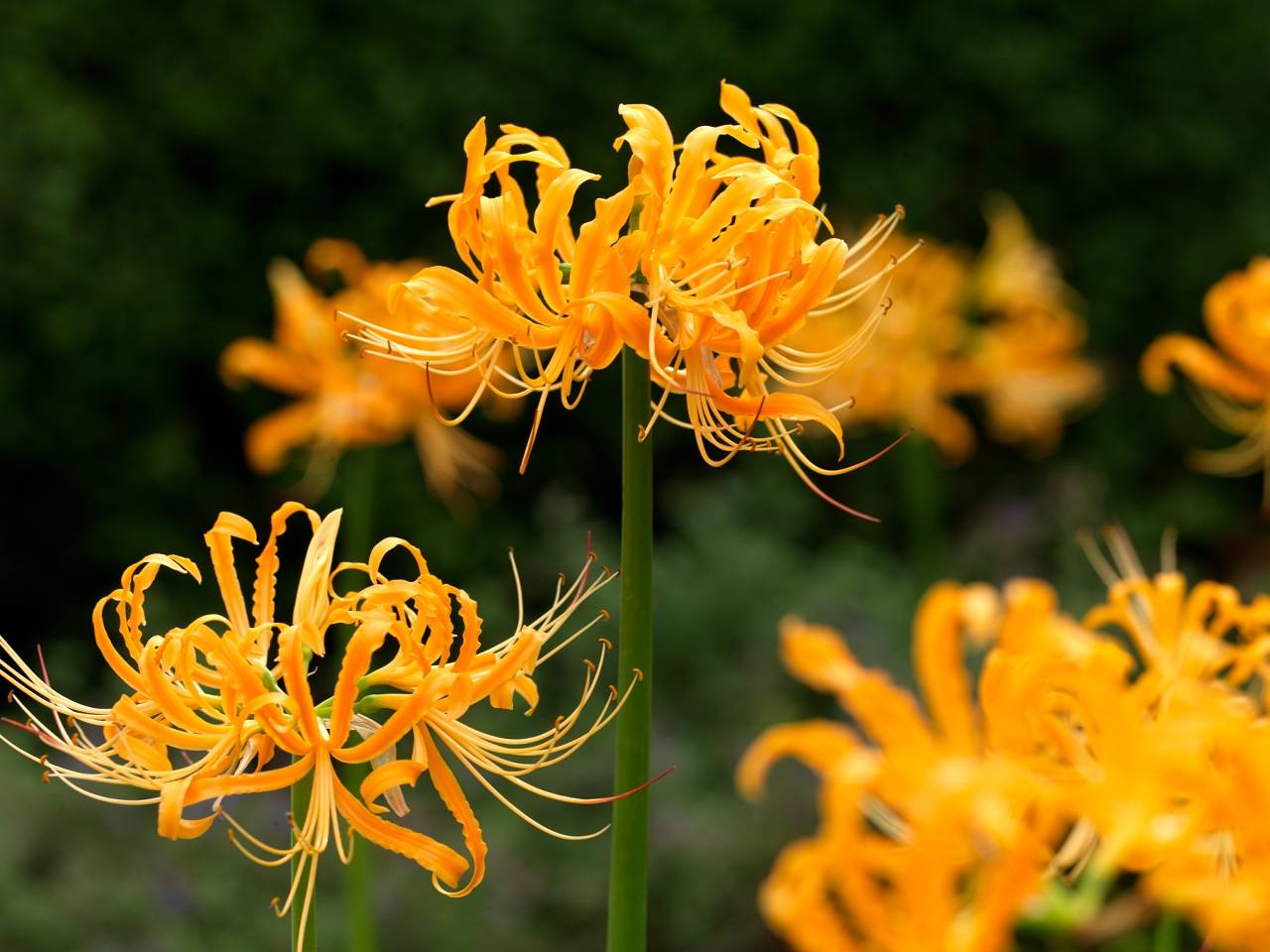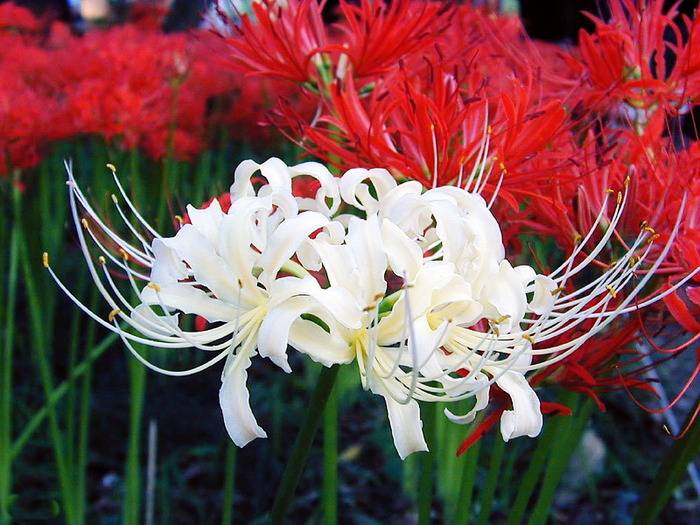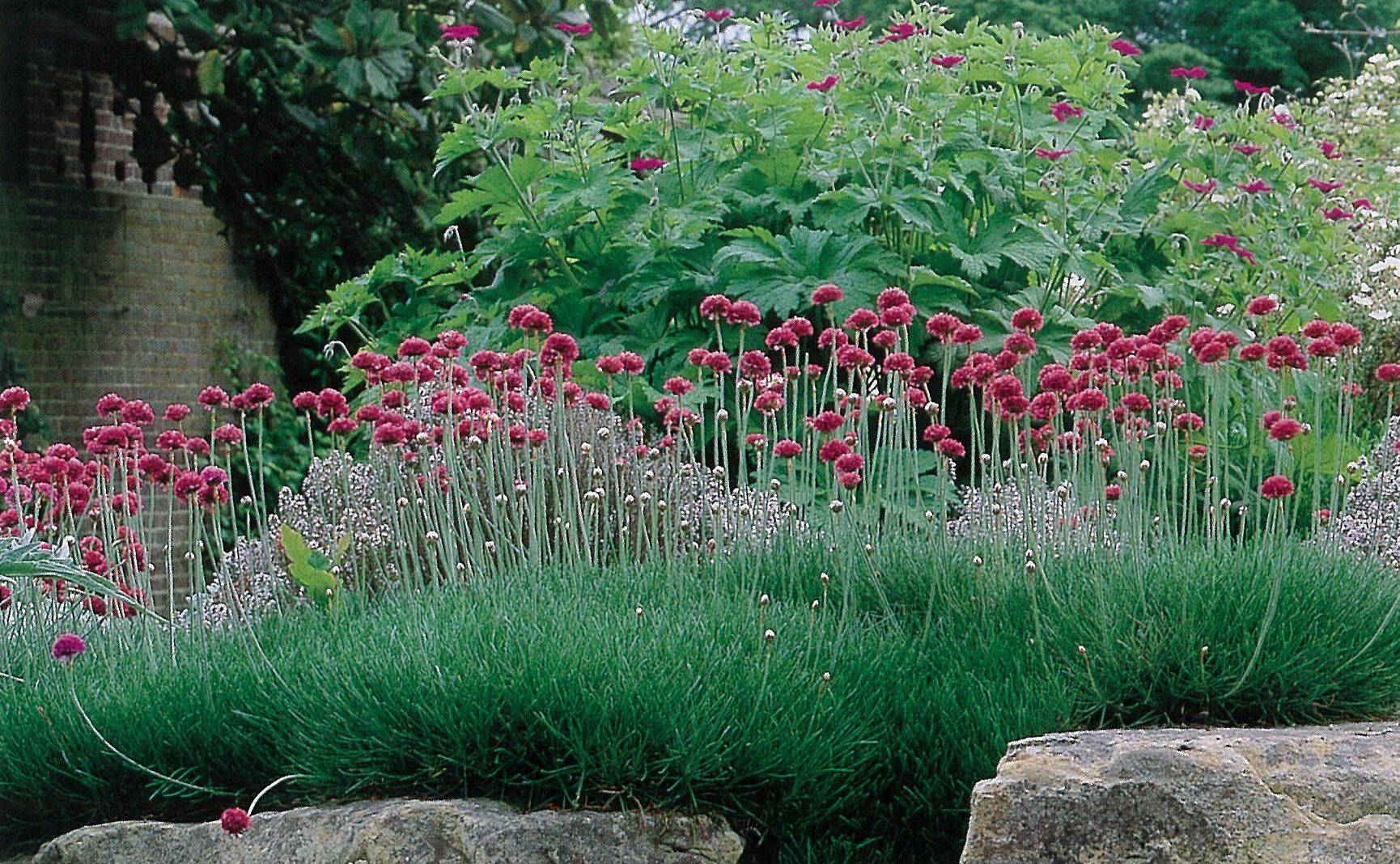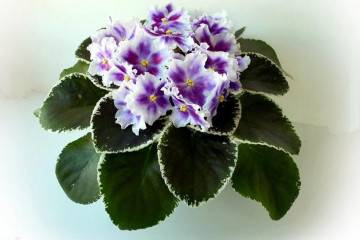Lycoris flower (Lycoris) - the value of the plant in various cultures
Content:
Licoris is a wild flower in China, Japan and India. You can grow this beautiful plant both in your personal plot and indoors. The culture has another name - "spider lilies". This plant does not require complex care, which allows even a beginner to grow a healthy and lush blooming lycoris.
Botanical description
Licoris is a perennial bulbous crop, the height of which ranges from 30-70 cm. The bulbs are quite large and reach 5 cm in diameter, the color can be dark brown or black.
The leaves have a belt-like shape, the color is bright green, they reach 40 cm in length and up to 2 cm in width. After the leaf rosette dies off in August, a single peduncle is formed, and already in September one can contemplate an attractive flowering.
Lycoris: flower meaning and legend
In ancient times, people believed in the existence of natural spirits that took care of magical plants. So, the spirit of Manju was supposed to watch the flowers of plants, and Saga - to the leaves. They were forbidden to meet, but, alas, one day it happened and, as a result, both spirits fell in love with each other forever. God was angry and made it so that leaves and flowers never meet on a beautiful licorice, like beloved ones.
Description of lycoris species and characteristics of varieties
There are many varieties of this plant. The most common varieties are discussed below.
Golden Lycoris (Lycoris aurea)
This is an ornamental plant with excellent decorative qualities. Withstands a drop in temperature to -3 degrees. The plant is suitable for indoor growing. The culture begins to bloom in June.
Licorice scaly (Lycoris squamigera)
An ornamental plant with a height of 65-80 cm. Leaf rosettes are formed in the immediate vicinity of the soil surface. The shape of the leaves is oblong, narrow. On average, their width is from 10 to 30 mm. In the second half of August, after the leaves are shed, flower stalks begin to form. On each of them, from 7 to 9 large double buds are formed. Their petals are oval in shape, color is light lilac. Long stamens are located in the central part of the flowers.
Lycoris radiata
Licoris radiant is a perennial flowering crop. It is formed in the form of a single flower no more than 70 cm high. Soon after the onset of heat, the bulbous plant releases a single arrow with narrow foliage. The leaf plates are miniature and have an oblong shape.
In the second half of summer, the green mass falls off and a single lush flower of terracotta or deep pink color begins to form. On the petals there are a large number of narrow antennae, which are bent downward.
Blood red lycoris (Lycoris sanguinea)
Licorice red is a perennial plant up to 45 cm high.The width of miniature leaves reaches 1 cm.The culture blooms in April, but in the summer all the green mass turns yellow and soon falls off, at the end of August flower stalks form. The diameter of the buds of a bright scarlet color ranges from 4.5-5 cm.
Licorice care in the garden
Licoris does not require special care, but a minimum of agrotechnical measures will have to be performed. The plant is photophilous, so the place for its cultivation must be well lit. With the onset of spring, waking up, lycoris need a lot of sunlight.
The optimal temperature regime is + 20-27 degrees. Drafts and gusts of wind should be avoided. To prevent the plant from dying with the onset of winter, the bulbs must be planted to a great depth.
Spider lilies need regular watering, but stagnant water is also undesirable, the root system will begin to rot. The surface of the soil must be loosened periodically.
In the spring and at the beginning of flowering, the soil is enriched with organic or mineral additives. The composition is brought under the root system in a diluted form.
Possible problems in growing lycoris
The advantage of the plant is that it is not susceptible to pest attacks or infection with infectious / fungal diseases. The only thing that can harm the culture is the invasion of daffodil flies. For the prevention of their "attacks" use solutions of insecticidal compositions.
Vegetative breeding method
Each year, the plant forms daughter tubers that can be used for propagation.
Algorithm of actions:
- Dig the bulbs out of the ground, make sure they are healthy and carefully separate.
- Transfer the obtained inoculum into previously prepared wells. The soil must be enriched with leafy soil, sand and peat.
You can expect the first flowering in the second year after planting.
Seed planting
When diluting lycoris with seeds, you need to strictly follow the algorithm:
- A pre-prepared planting pot with drainage holes is filled with a mixture of fertile soil, peat moss, vermiculite and perlite.
- Seeds are scattered over the surface of the soil mixture and sprinkled with a small amount of earth.
- The soil is moistened, and the pot is covered with foil.
- The pots are transferred to a room with a stable temperature of + 21-24 degrees.
After a few weeks, the first shoots can be expected.
Use in landscape design
Licorice or spider lilies are often used to decorate garden paths and flower beds. The culture is often planted near ferns, crocuses and begonias.
Licorice flowers are attractive and easy to care for and grow. Thanks to the rich colors of the petals, the flower gives a wonderful mood to everyone who looks at it.



















